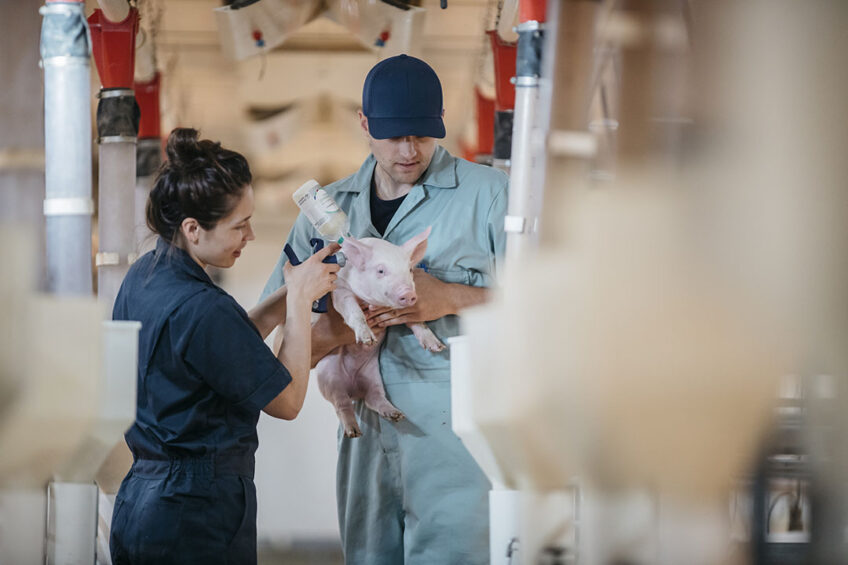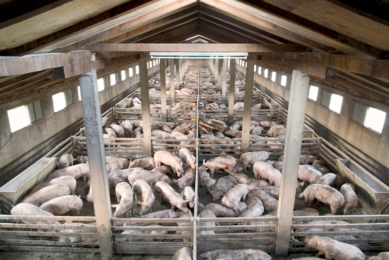No reason to worry about new PCV2 genotypes

Globally, vaccination of pigs against Porcine Circovirus (PCV) disease has been widely adopted with control of the disease and return on investment for farmers. Since the virus’ early days, research has shown a continuous evolution of the PCV2 virus at the genetic level. There is, however, no reason for concern.
To understand how PCV2 is moving in time and geographically, scientists use molecular sequencing. That has focused on sequencing one part of the virus: the ORF2 gene that encodes for the capsid, the key protein detected by the pig’s immune system. Investigations prove that the virus has continuously evolved, from the early days of post-weaning multisystemic wasting syndrome (PMWS), to the time of PCV2 vaccine launches (2007–2010) when PCV2-b was the most common, to PCV2-d, the genotype currently found in higher frequency. This was to be expected from a virus that has a high mutation rate.
The current genetic changes do not seem to change the structure of the capsid protein enough to evade protection from PCV2-a based vaccines. Therefore, despite the significant number of genotypes described (PCV2-a to PCV2-i), it seems one single PCV2 serotype exists so far.
Scientists do not fully understand what drives this rapid evolution, but it is likely due to immune pressure and a high virus population. For that reason, it is important to monitor PCV2 detected from clinical cases and the different genotypes that evolve, to confirm the continued high degree of protection from current vaccines.
Vaccination confers cross-protection
Researchers Giovanni Franzo, at the University of Padova, Italy and Professor Joaquim Segalés, from CReSA-IRTA, Spain recently published about the subject. They stated, “So far, all vaccines in the market have shown great efficacy in reducing clinical signs associated to diseases caused by PCV2, independently of the genotype present in the farm. Moreover, experimental data demonstrated the cross-protection of PCV2-a vaccines against the most widespread genotypes (PCV2-a, PCV2-b and PCV2-d).”
Numerous farm and laboratory studies around the globe show clear evidence that a PCV2-a based vaccine (Ingelvac CircoFlex) provides effective protection against the most prevalent strains in the field (see Table 1).
Assumption of vaccine failure
Certainly, at a very low frequency there are still times when PCV2 infection is suspected because producers report wasting and other clinical signs. However, when those cases are carefully investigated, they are mostly related to either failures in the vaccination procedure, occurrence of Porcine Reproductive and Respiratory Syndrome or combinations of viral and bacterial infections.
In some rare cases, very early PCV disease is seen in piglets in early nursery, despite vaccination around the time of weaning. Typically, what is recognised is that the PCV2 infection has happened before vaccination.
The most likely reason is infection of the foetus during gestation in sows or gilts that had not been fully protected by vaccination. Diagnostic investigations have shown that in very effectively vaccinated and managed herds, gilts selected for replacements can enter the breeding herd completely naïve to PCV2. If those gilts become exposed during gestation, PCV2 can cross the placenta and infect the foetus, causing infertility or infected pigs at birth.
In other cases, the sow herd immunity becomes uneven allowing for increased circulation of PCV2 in sows (unstable sow herd) and further infection of foetuses during gestation. Those piglets are then born infected with PCV2.
The solution is to address the immunity of the whole herd by vaccinating gilts and sows with a PCV2 vaccine approved for use in sows in addition to continuing to vaccinate piglets. Veterinarians will be able to set up a whole herd plan for effective circovirus control.

Clinical disease
Recently, Prof Segalés said, “My perception is that the pathogenicity of the different PCV2 genotypes is not apparently different. We do experience systemic disease despite vaccination on a very low percentage of farms, but I believe it’s much more a matter of epidemiology rather than of changing pathogenicity of genotypes or viruses.”
It is critical that any suspected PCV disease cases are investigated by a vet and that laboratory diagnostics are used, including pathological examination to confirm the presence of PCV2 and the typical lesions of PCV disease under the microscope. As PCV2 can be detected by sensitive PCR tests in fully protected healthy piglets, this is not enough to confirm the disease.
Finally, it is important to understand that PCV3, a newly detected circovirus in clinical cases (reproductive failure and wasting in piglets) should not be confused with the emergence of different strains of PCV2. PCV3 is considered a separate species which shares only 50% genetic identity with PCV2, and no cross-protection from existing PCV2 vaccines should be expected.
References available on request.











